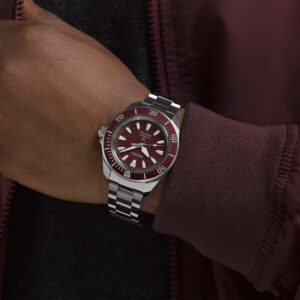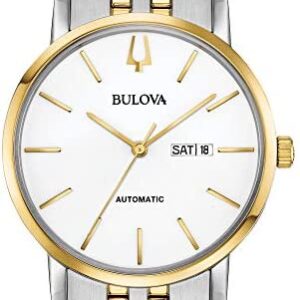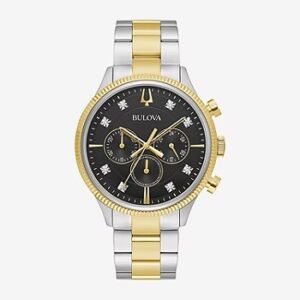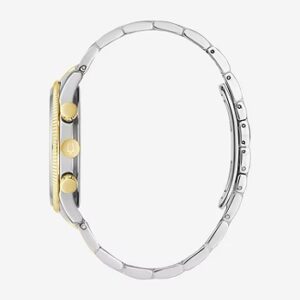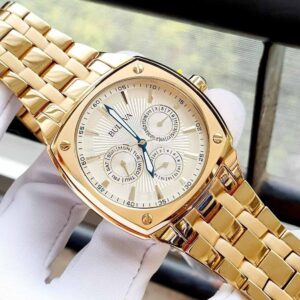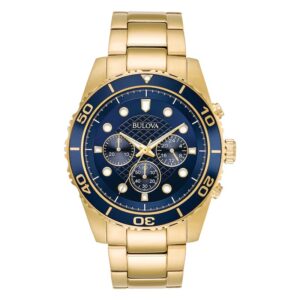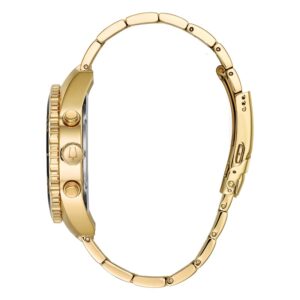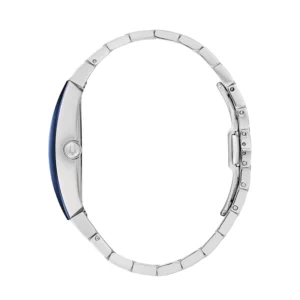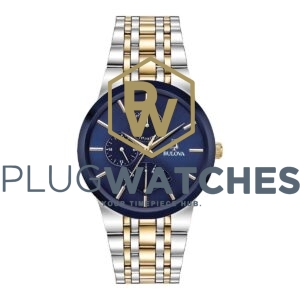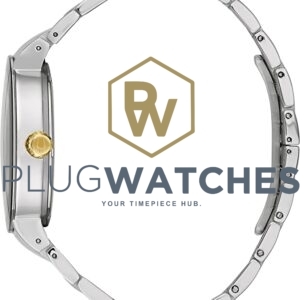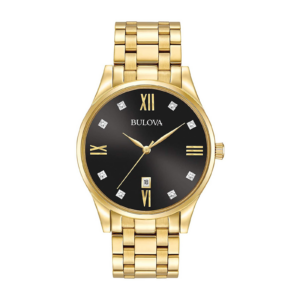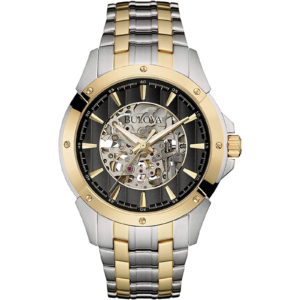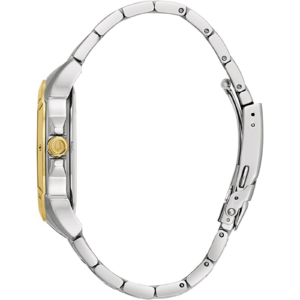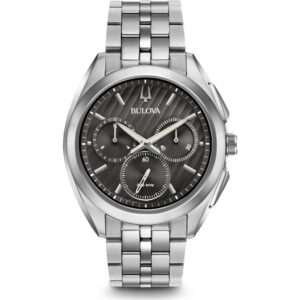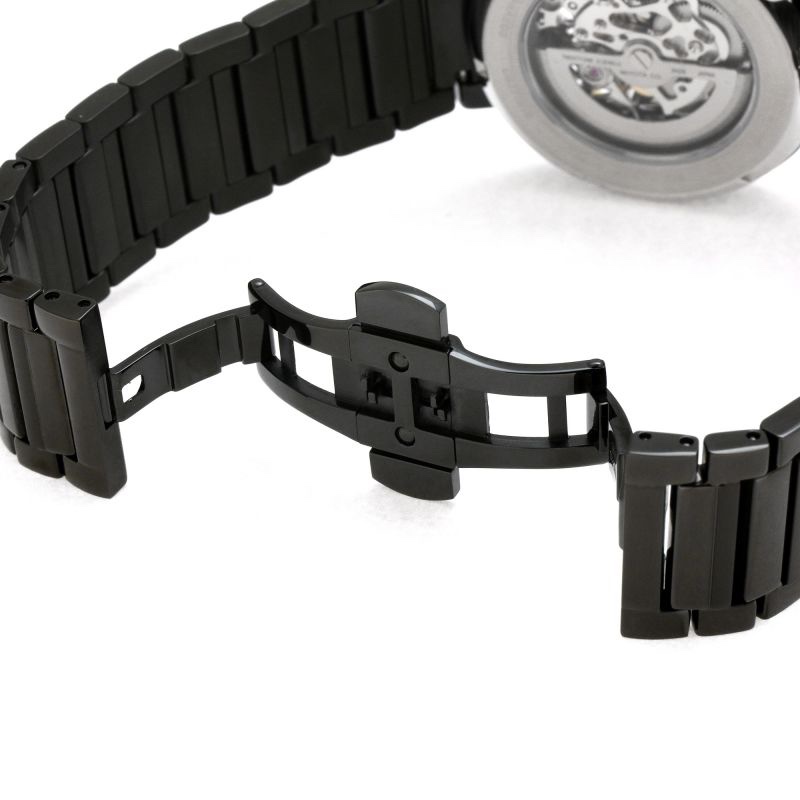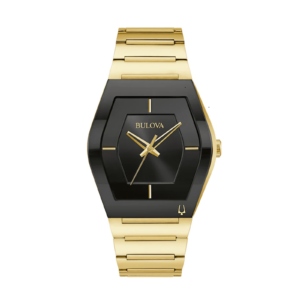Bulova was founded and incorporated as the J. Bulova Company in 1875 by Bohemian immigrant Joseph Bulova. It was reincorporated under the name Bulova Watch Company in 1923, became part of the Loews Corporation in 1979, and was sold to Citizen at the end of 2007. Throughout its history, Bulova developed a reputation for technological innovation and for adapting to the changing needs of customers and the evolving trends of the market.
Bulova started a small jewelry shop in New York City around 1875. It was located in New York’s Maiden Lane specializing in jewelry and the repair of clocks and the occasional pocket watch. Around 1911 Bulova began producing table clocks and pocket watches.
In 1912, Joseph Bulova launched his first plant dedicated entirely to the production of watches.[8] Manufacturing watches at their factory in Biel, Switzerland, he began a standardized mass production new to watchmaking. In 1919, Bulova offered the first complete range of watches for women and men in 1924. The visual style of his first popular advertising made its watches popular with the American public. But beyond the original style, precision and technological research also became imperative for Bulova. In 1927, he set up an observatory on the roof of a skyscraper located at 580 5th Avenue to determine universal time precisely.
Bulova established its operations in Woodside, New York, and Flushing, New York, where it made innovations in watchmaking, and developed a number of watchmaking tools. Its horological innovations included the Accutron watch, which used a resonating tuning fork as a means of regulating the time-keeping function.
During the 1920’s and ’30’s, Bulova was noted for its art deco watches, which were typically either rectangular or square. Models from this period included the Breton (square or rectangular cases), the Banker (tonneau or barrel shaped), and the Commodore (round cases). All three of these models were modernized in 2020 as the Joseph Bulova Collection, utilizing swiss made Sellita mechanical movements. From 1922 through 1930, Bulova marketed 350 different ladies’ Art Deco watches, with at least an equal number of models for men.
The Westfield Watch Company, Inc. is listed as a Bulova subsidiary at least as early as 1931, but Bulova had trademarked the Westfield name in 1927. Westfields were considered the lower cost options in the Bulova line, since the movements typically had lower jewel counts than mainstream Bulovas, and cases and straps may also not have been of the same quality as other Bulova models. Like the regular Bulovas, the Westfield movements were Swiss made, but the two lines did not use the same movements. Westfield watches were produced at least through the 1950s, with the Caravelle line introduced in the early 1960s. The Bulova trademark of the Westfield name is reported as cancelled in 1989.
-
BULOVA 98C130 MEN’S WATCH
Stainless steel case with a two-tone (silver-tone and gold ion-plated) stainless steel bracelet. Fixed gold ion-plated bezel. White dial with gold-tone hands and index hour markers. Dial Type: Analog. Day of the week and date display at the 3 o’clock position. Automatic movement with a 40-hour power reserve. Scratch resistant mineral crystal. Pull / push crown. Transparent case back. Round case shape. Case size: 42 mm.Case thickness: 11.5 mm. Band width: 21 mm. Fold over clasp with a safety release. Water resistant at 30 meters / 100 feet. Functions: date, day, hour, minute, second. Casual watch style. Bulova Classic Automatic White Dial Men’s Watch 98C130.
Estimated delivery on 30 April - 6 May, 2025$495.00$620.00EAN: 037000048800BULOVA 98C130 MEN’S WATCH
$495.00$620.00 -
BULOVA 98D172 DIAMOND CHRONOGRAPH
Bulova’s Dress Sport men’s watch features a statement two-tone stainless steel case and bracelet which is finished with a deployant buckle. The dial is set with eight diamonds, and features a six-hand chronograph, combining form and function for a look of luxury at a great value.
Estimated delivery on 30 April - 6 May, 2025$510.00 EAN: 145000087672 -
BULOVA 97C105
Stainless steel case with a stainless steel bracelet.Fixed stainless steel bezel.Luminous hands
Dial Type: Analog.Quartz movement.
Pull / push crown.Solid case back.Estimated delivery on 30 April - 6 May, 2025$540.00 EAN: 055000048866BULOVA 97C105
$540.00 -
BULOVA MARINE STAR 98A172 GOLD TONE TIMEPIECE
Crafted in yellow plated stainless steel, this luxe and sophisticated Bulova chronograph is perfectly versatile to suit every occasion. A navy dial offers baton markers and a trio of subdials for precise timekeeping.
Estimated delivery on 30 April - 6 May, 2025$550.00 EAN: 168000087831 -
BULOVA GEMINI 96A258
Distinctive asymmetrical tonneau shaped stainless steel case with a blue signature Futuro edge to edge curved metalized crystal features a blue dial and a stainless steel bracelet. The watch features a three-hand quartz movement, deployant buckle with pushers, and water resistance to 30 meters.
Estimated delivery on 30 April - 6 May, 2025$600.00 EAN: 155000062784BULOVA GEMINI 96A258
$600.00 -
BULOVA 98C132 MEN’S WATCH
From the Modern Collection. Multi-function design In stainless steel with silver-tone and gold-tone finish, blue dial, curved mineral glass, and deployment closure.
Estimated delivery on 30 April - 6 May, 2025$650.00 EAN: 127000069551BULOVA 98C132 MEN’S WATCH
$650.00 -
Estimated delivery on 30 April - 6 May, 2025$700.00 EAN: 040000053576
BULOVA 97D108 GOLD
$700.00 -
BULOVA MEN’S WATCH 98A146 CLASSIC AUTOMATIC
BULOVA MEN’S WATCH 98A146 CLASSIC from the Automatic collection. In stainless steel with silver-tone and gold-tone finish, black outer dial, open skeleton inner dial, flat mineral glass, fold-over closure with pushers, safety bar and extenders, and exhibition case back.
- From the Bulova Men’s Classic Collection, inspired by vintage design, our classic watches achieve a tailored understand look and feature self-winding movements that are powered by the motion of your wrist.
- 3 Hand, Automatic, Full Skeleton
- Two-Tone Stainless Steel
- Mineral Crystal
- 30M Water Resistant
Estimated delivery on 30 April - 6 May, 2025$700.00 EAN: 148000055122 -
BULOVA 97A131 AUTOMATIC TIMEPIECE
The Bulova men’s gold-plated automatic movement watch boasts an elegant gold-tone bracelet in stainless steel with a fold-over clasp. The sophisticated navy blue dial features an open aperture and see-through case back along with gold-tone Roman numerals: the minute and hour hands are delicately tapered and the gold-tone second hand indicates minute markers on a count-up bezel around the outside of the dial.
Estimated delivery on 30 April - 6 May, 2025$820.00 EAN: 108000055171 -
Estimated delivery on 30 April - 6 May, 2025$850.00 EAN: 033000048697
BULOVA 96A186 CURVE
$850.00 -
Estimated delivery on 30 April - 6 May, 2025$850.00 EAN: 183000055802
-
BULOVA GEMINI FUTURO 97A164
Men’s Bulova Large Gemini Futuro Gold-Tone Stainless Steel Bracelet 97A164 wrist watch shop in Ghana.
Estimated delivery on 30 April - 6 May, 2025$850.00 EAN: 122000056570BULOVA GEMINI FUTURO 97A164
$850.00



